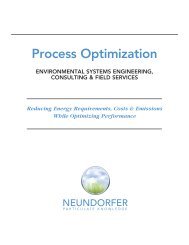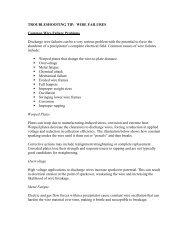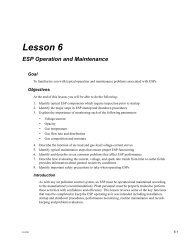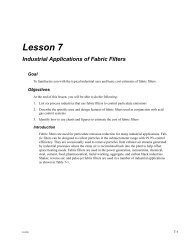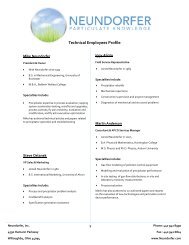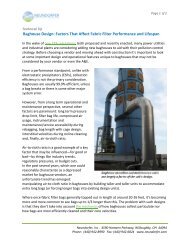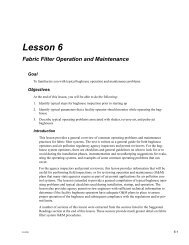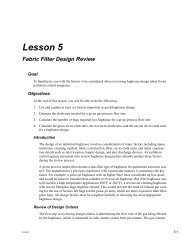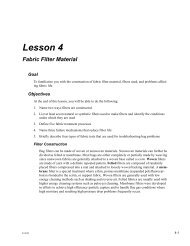Precipitator Optimization System User Manual - Neundorfer, Inc.
Precipitator Optimization System User Manual - Neundorfer, Inc.
Precipitator Optimization System User Manual - Neundorfer, Inc.
Create successful ePaper yourself
Turn your PDF publications into a flip-book with our unique Google optimized e-Paper software.
<strong>Precipitator</strong> <strong>Optimization</strong> <strong>System</strong> 7<br />
<strong>User</strong> <strong>Manual</strong><br />
4. POS Basics<br />
Components of Overall <strong>System</strong><br />
There are two major components of a typical POS control system. The first component is the<br />
POS application software that runs on personal computers running the Windows operating<br />
system. The second component is the hardware connected to the POS control system. This<br />
hardware may consist of <strong>Neundorfer</strong> equipment including MVC voltage controls, MicroRap rapper<br />
controls, along with PLC equipment for hopper evacuation, soot blowing, and flue gas<br />
conditioning systems.<br />
Specific sub-component information for the <strong>Neundorfer</strong> MVC voltage controls, and MicroRap<br />
rapper controls can be found in their respective manuals.<br />
POS Hardware Components<br />
The <strong>Neundorfer</strong> controls are linked together via an RS-485 multidrop network. The RS-485<br />
interface is built into the rapper controls and voltage controls. On POS computers, the interface<br />
may be an internal card or the output from the computer may be RS-232, which is then converted<br />
to RS-485 by an external converter. For specific details implementing this network refer drawings<br />
supplied with the system. Each device within a family of devices requires a unique address<br />
number on the multi drop network. The voltage control addresses are set on the voltage control<br />
front panel and range from 1 to 255. Each rapper control also requires a unique address number<br />
from 1 through 32, and is set via the hand held programmer supplied with the control. The POS<br />
computer is the master of this network, meaning it is the only device that can initiate a message.<br />
The voltage controls and rapper controls can only send messages after specifically addressed by<br />
POS using their control type and unit number. When the POS computer initiates communication<br />
with a control, POS will wait for one of two events to occur before sending another message.<br />
The first event is a valid response from the control and the second is a communication error. A<br />
communication error will occur if the addressed control does not respond within the allotted time<br />
or the message received is invalid.<br />
For MVC4 voltage controls the data link between the POS computer and the voltage controls<br />
should be a fiber optic link. The fiber optic link is converted to RS-485 at the voltage controls.<br />
The fiber optic link is required to prevent ground loops between the grounded RS-485 cable’s<br />
shield at the PC and the grounded voltage control cabinets.<br />
Many POS software modules require external signals provided by other plant systems. These<br />
inputs can be hardware wired electrical signals such as a 4-20mA input or digital communications<br />
such as OPC or Modbus protocols. How these signals are brought into POS is very plant<br />
dependant and therefore built custom for your installation. There will be hardware drawings<br />
provided for and additional equipment provided for the interface of electrical signals.<br />
Copyright © 2007 <strong>Neundorfer</strong>, <strong>Inc</strong>orporated<br />
Specifications and Features subject to change without notice<br />
08/01/07<br />
3



